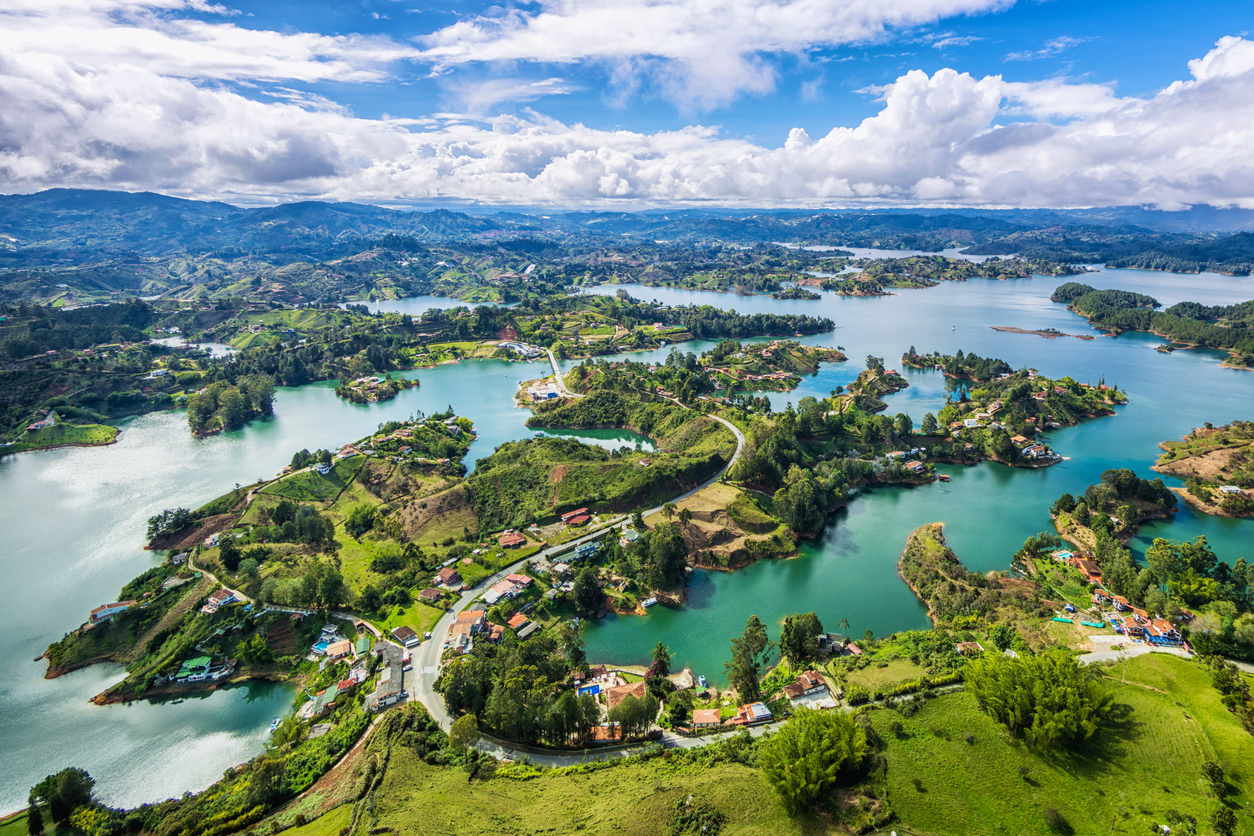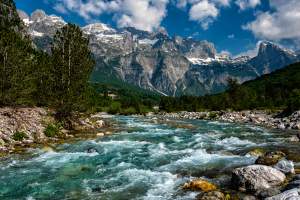
When most travelers think of South America, a few headline destinations come to mind: Machu Picchu, Rio de Janeiro, Patagonia. And while those icons are undeniably worth visiting, the continent offers far more than the usual suspects. South America is vast, wild, and layered with cultures, landscapes, and stories that most travelers never get close to — and that’s where the real magic happens.
The best-kept secrets of South America aren’t necessarily inaccessible. Many are just overlooked — passed by on the way to more famous places. But if you want to dig deeper, travel smarter, and see sides of the continent that haven’t been filtered through Instagram a hundred times, these are the places to go.
Here are the destinations in South America that deserve your attention — before everyone else finds out.
1. Colonia del Sacramento, Uruguay
Just across the river from Buenos Aires, Colonia del Sacramento feels like stepping into another era. This UNESCO World Heritage city is a blend of Portuguese and Spanish colonial architecture, cobbled streets, and slow rhythms that invite you to exhale.
The pace here is unhurried. Rent a bike, sip local tannat wine at a waterside café, or explore the old lighthouse overlooking the Río de la Plata. It’s beautiful, affordable, and blissfully under-touristed. Uruguay’s laid-back charm is on full display here — without the crowds.
2. Barichara, Colombia
Often called “the prettiest town in Colombia,” Barichara remains surprisingly untouched by international tourism. Located in the highlands of Santander, it’s a pristine collection of whitewashed buildings, terracotta roofs, and stone streets that haven’t changed in centuries.
What makes it special is the feeling — peaceful, safe, and suspended in time. Walk the Camino Real to nearby Guane, visit artisan workshops, or simply sit in the town square with a coffee and watch the light change over the hills. It’s Colombia without the chaos, and that’s saying something.
3. Isla Grande, Brazil
Skip the crowds of Copacabana. Brazil’s best beach escape is just a few hours from Rio — and it’s hiding in plain sight. Isla Grande (Ilha Grande) is a car-free island of rainforest, waterfalls, and white sand beaches that feel practically untouched.
Lopes Mendes Beach regularly ranks among the world’s best, and you’ll find hikes, hidden coves, and beach bars that don’t feel curated for tourists. If you want a tropical escape with real edge and no resort vibe, this is it. Come for a few days, stay for a few weeks.
4. Pucón, Chile
While Patagonia gets most of the spotlight, central Chile is full of mountain towns worth knowing — and Pucón is the crown jewel. Set on Lake Villarrica with a smoking volcano in the background, Pucón offers adventure without the extremes.
You can hike, ski, kayak, and soak in natural hot springs — all within an hour of town. But there’s also a cozy café scene, craft beer, and enough infrastructure to make it comfortable without killing the wild feel. It’s the kind of place you come to “do things,” but end up staying just to breathe.
5. Chachapoyas, Peru
Everyone goes to Cusco. Almost no one goes to Chachapoyas — and that’s a shame. Tucked in the cloud forests of northern Peru, this region is home to ancient ruins, dramatic cliffs, and some of the tallest waterfalls in the world.
The main draw is Kuelap, a pre-Incan fortress sometimes called “the Machu Picchu of the North.” It’s every bit as impressive — but without the tour groups. Add in the 2,500-foot Gocta Falls, and you’ve got one of the most underrated adventure destinations on the continent.
6. Minca, Colombia
Minca is what happens when backpackers find paradise and forget to leave. This small town in the Sierra Nevada mountains, just outside Santa Marta, is a dreamy mix of jungle, waterfalls, and panoramic views over the Caribbean.
Days here are slow: hiking to waterfalls, sipping coffee from farms that grow it, lounging in hammocks above the clouds. Internet is weak, cell service is spotty, and nobody seems to care. It’s a place to disappear for a while — and maybe come back a little different.
7. El Bolsón, Argentina
South of Bariloche but far from touristy, El Bolsón is a hippie mountain town with homemade everything: cheeses, beers, candles, wool sweaters. It sits in a valley surrounded by forested mountains and glacier-fed rivers — think Switzerland on a shoestring.
There’s a long-standing artisan market, a strong local food movement, and hiking trails that don’t require a guide or a permit. The vibe is relaxed and creative, more guitars around a campfire than big hotel chains. Argentina is full of jaw-dropping scenery, but El Bolsón is where you live in it.
8. São Luís, Brazil
While Salvador gets more attention for Afro-Brazilian culture, São Luís is where things get even more layered. This UNESCO-listed city in northern Brazil has crumbling pastel mansions, reggae bars, and a colonial history that’s still deeply visible.
It’s also the jumping-off point for Lençóis Maranhenses National Park — a surreal desert of white dunes and seasonal blue lagoons that look Photoshopped. São Luís itself feels raw and real, with a cultural identity unlike anywhere else in the country.
9. Valle de Cocora, Colombia
Technically not a town but a region, the Cocora Valley is one of Colombia’s most jaw-dropping natural sites — and still somehow not overrun. Here, you’ll find towering wax palms (Colombia’s national tree) that stretch up to 200 feet, shrouded in mist and surrounded by green hills.
The hike through the valley is a must, especially if you loop through cloud forest trails and finish with a hot chocolate in nearby Salento. It’s surreal, photogenic, and deeply peaceful — and somehow still flying under the radar.
10. La Paz, Bolivia
La Paz gets skipped far too often by travelers heading to the salt flats — but it’s one of the most fascinating urban environments in South America. Built in a canyon at high altitude, the city seems to hang from the cliffs, and its cable car system gives you a panoramic commute like nowhere else on Earth.
Markets sprawl endlessly, indigenous culture is everywhere, and nothing feels polished for outsiders. It’s gritty, weird, beautiful — and alive. Spend a few days getting lost here and you’ll come away with a very different view of Bolivia.
What Makes These Places “Secrets”?
In a world where even remote corners end up trending online, these destinations remain low-profile because they:
- Lack international branding: They’re not advertised heavily or turned into “must-do” circuits.
- Require effort: Some take an extra flight, bus, or boat — but the payoff is worth it.
- Aren’t built for tourists: And that’s the point. They exist for themselves, not for Instagram.
- Offer authenticity over amenities: You won’t find Starbucks, but you’ll find soul.
Tips for Exploring South America’s Hidden Gems
- Brush up on your Spanish or Portuguese: English is less common in off-the-beaten-path areas.
- Travel slow: These aren’t “checklist” places. They reward time and attention.
- Go shoulder season: You’ll avoid crowds and get better weather in many cases.
- Be open: Infrastructure might be minimal. Schedules may change. Adaptability is part of the experience.
- Respect the locals: These places aren’t set up for mass tourism — be generous, not disruptive.
South America isn’t just a continent of icons — it’s a continent of secrets. The kind that reveal themselves slowly, off the highway, around the corner from where most people stop looking. These destinations won’t stay secret forever. But for now, they’re still places where you can feel like a traveler, not a tourist — and experience something that feels real, rare, and entirely your own.
So if you’re ready to go beyond the guidebooks, this is your invitation to see South America differently — through its quiet, wild, and deeply human corners.







